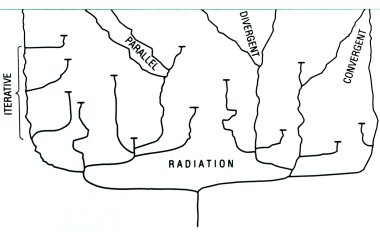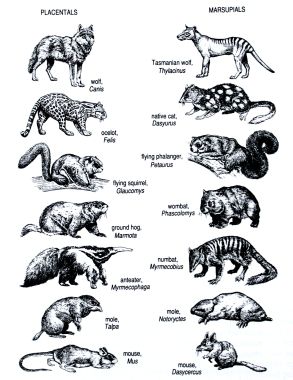
After Skelton: Evolution (1993)

After Skelton: Evolution (1993)
Divergent evolution is the most common type: the forms are getting more and more different.
Parallel evolution is the case if two closely related species evolve in similar ways in successive time spans. This type occurs rather often if the circumstances are comparable.
Iterative evolution is a repetition of about the same development in one group with large intervals in the range of millions of years.
Convergent evolution is the most interesting one of these patterns. It is the phenomenon that nonrelated groups evolve to similar forms. An example are the woodpecker-like Darwin's finches and the real woodpeckers. And the beetle-like fruit flies from Hawaii and the real beetles. The cause lays in the similar ways of living of both groups. The shape they develop is obviously the best adaptation to the environment.
Know more?
Parallel evolution
List
of examples of convergent evolution
wolf - Tasmanian Wolf (extinct)
ocelot - native cat
flying squirrel - flying phalanger
ground hog - wombat
anteater - numbat
mole - marsupial mole
mouse - marsupial mouse
etc.
Know more?
Tasmanian
Wolf
Ichthyosaurs
resemble dolphins